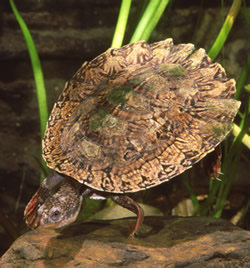 Scientists from the Queensland Museum have discovered that a freshwater turtle living in the Nicholson and Gregory Rivers that flow into the Gulf of Carpentaria and commonly known through the years as the Gulf Snapping Turtle is in fact a brand new species.
Scientists from the Queensland Museum have discovered that a freshwater turtle living in the Nicholson and Gregory Rivers that flow into the Gulf of Carpentaria and commonly known through the years as the Gulf Snapping Turtle is in fact a brand new species.
Museum herpetologists Patrick Couper and Andrew Amey played a major role in identifying the new turtle which until recently was believed to be the same species as a fossil excavated in the early 1990s from a Pleistocene Terrace Site on Riversleigh Station.
Joining a study led by an American turtle researcher, Mr Couper and Dr Amey found several differences between the Riversleigh fossil and the modern snapping turtle, including size.
“The fossil specimen Elseya lavarackorum can now be regarded as an extinct Pleistocene species, inhabiting rivers in the Gulf of Carpentaria less than 2.6 million years ago,” Mr Couper said.
“With a shell that can reach up to 35 centimetres, the Gulf Snapper is most closely related to snapping turtles in coastal regions of eastern Queensland,” he said.
“The top of the head is encased in a thick, horny shield and large females have a pale face.”
He said the snapping turtles were known to feed on fallen fruit from cluster figs that overhang rivers along with algae, freshwater mussels and aquatic insect larvae.
The description for the newly identified turtle Elseya oneiros has recently been published in the Batagur Monographs.


